The train slowly creaked into motion, taking me away from Amsterdam Centraal. My hand was still a little bloody from cutting it on the bicycle; and my stomach was full of kebab (I haven’t properly visited a city unless I sample the local kebab), which is never an exactly pleasant sensation. Soon we were speeding through the Dutch countryside. What was most striking about the scenery is how amazingly flat it is (being largely recovered marshland); the only thing that broke the skyline were distant church spires.
I was on my way to Belgium. Now, this modest member of the Low Countries has a special significance for me. Growing up, I had a close friend from Belgium. His parents worked for the United Nations and so they ended up living in Sleepy Hollow, New York. I didn’t know anyone else from Europe, so my impression of the continent was shaped by my experience with my Belgian friend and his family.
They were an impressive bunch—tall, blond, active. I remember once witnessing the parents have lunch; to my amazement, they were eating salads! (My friend took every opportunity to eat junk food when he visited my house.) I heard strange stories of tasty waffles and french fries (which, the Belgians reminded me, weren’t really French). Finally, in my last year of high school, my Belgian friend had to move with his family to Tokyo, and I was permanently left with a hazy impression of a far-off land where everyone lived in cozy little houses eating salads and waffles. Now I could finally see Belgium for myself.
Brussels
My train rolled into Brussels, and I got out to find my Airbnb and to explore the city as best I could in the remaining hours of daylight. Brussels cannot help but be at least a little disappointing to someone who has just finished visiting Amsterdam. While the Dutch city is full of personality, Brussels immediately struck me as bland and anonymous. I felt as if I could be anywhere: Germany, France, Italy, Spain… Was this the place I had been dreaming about all these years?
My impression of the city considerably improved when I found my Airbnb. It was near a street full of attractive restaurants (yes, including kebab), and it was a surprisingly beautiful apartment for the price I had paid. The host, who spoke excellent English, worked in the movie industry; so the flat was decorated with many posters and other movie paraphernalia. This was some real European culture.

I had arrived somewhat late in the afternoon, so I didn’t have a lot of time to explore the city. After checking in I hightailed it to the main attraction of the city: the Manneken Pis. I wonder how the Brusselites feel that the identifying sculptural icon of their city is little peeing boy. Perhaps they have a good sense of humor, as the statue seems to indicate. In any case, I confess that I did not feel the profound sense of awe and wonder that the statue can inspire. But maybe this was because someone had cheekily dressed the statue up for winter, so his impishly naked form was buried under heavy fabrics. (Apparently this is the usual state of affairs. In the post-war European recovery and boom, the relieved and happy Belgians took to dressing their iconic statue in an ever-increasing assortment of traditional costumes. The young urinating rascal apparently has a wardrobe several times bigger than even a dedicated shopaholic.)
Five minutes from the “little pisser” is the central square of the city, the magnificent Grand Place. This expansive plaza contradicted everything that I thought I had observed about the Brussels. For it is not plain, generic, or blandly modern. It is, in fact, one of the most beautiful central squares that I have ever seen, comparable to the Marienplatz in Munich and Prague’s Old Town Square. It gives the visitor that unmistakably pleasurable sensation of being, without a doubt, in Europe.

Dominating the Grand Place is the old gothic Town Hall, which looks strikingly similar to the New Town Hall in Munich or the Town Hall in Vienna. And this is no coincidence, since both of those neo-gothic edifices take their inspiration from this genuinely gothic construction. The hall has survived fires and bombardment to serve as an archetype for the secular gothic style. Facing the Town Hall is the King’s House. This building—an administrative building that now houses the city’s museum—gets its name from the King of Spain (specifically, Philip I of Castile, the first Habsburg king in the Iberian peninsula); and thus it serves as a strange reminder of the erstwhile dominance of this Lowlandish nation by the Mediterranean country.* Apart from these two imposing spired structures, the rest of the plaza is dominated by guild houses, which look like ornate apartment buildings. One of these is called Le Roy d’Espagne, and could very well refer to me.
*You might be interested to learn that the word “flamenco” means “Flemish” in Spanish, and in the past was used for anything deemed extravagant. Thus it came to be applied to the genre of music, which of course does not come from Flanders.

My next and last stop (the sun was already setting) was the Cathedral of Brussels—or, more formally, the Cathedral of St. Michael and St. Gudula. It has only been a proper cathedral for sixty years or so, since Brussels falls within the diocese of Mechelen; and that city already had a cathedral. Oversized church or a properly-sized cathedral, it is an attractive building—made in the formidable French gothic, with its two towers standing like bulwarks over the city. The inside is correspondingly impressive, though little stands out for comment besides a resplendently decorated baroque altar. In sum, it is a worthy cathedral, and its front porch offers an attractive view of the city—especially during sunset. The worst that can be said of the building is that, like so much of Brussels, it blends in with other parts of Europe so seamlessly as to lack character.

My short time in Brussels was spent. The sun had set, and every attraction would be closed. I had decided to spent the next and final day of my trip visiting Bruges, so it seemed unlikely that I would be seeing anymore of the nation’s capital. This meant that I would not see the enormous Atomium, a steel sculpture of a unit of an iron crystal (and not, as some wrongly say, of an iron atom). I would also miss the Museum of Fine Art, which is so good that W. H. Auden dedicated a depressing poem to it. Indeed, I would not see any of Brussels many fine museums—which include those dedicated to trains, musical instruments, and comic strips. I had to choose between all this and Bruges, and I chose Bruges.
I ate dinner in a fish and chips shop (Bia Mara), bought some Belgian beers (Leffe) in supermarket to drink in the Airbnb, and then walked back to drink delicious beer by myself and to post photos (edited for extra saturation) on Instagram. Obviously I was having a great vacation.
But before I leave Brussels, I wanted to share some of what I learned about Belgium during my time there. I found, to my great surprise, that the country is still a monarchy; and the old royal palace (now unused by the royal family) stands in the city center—a palace which, if I can judge from the photos, is as bereft of character as the rest of the city. I also learned that Brussels is the unofficial capital of the European Union, with much of the organization’s offices located here; indeed, sometimes “Brussels” is used as a synecdoche for the EU. The presence of so many thousands of native and foreign bureaucrats in the city has not helped its reputation as a tourist destination. Perhaps this helps explain why the city gives such a strong impression of being anonymously European—it really is at the crossroads of Europe. NATO also has its headquarters here, only adding to the mix.
Yet it is not only Brussels that has something of an identity crisis. The whole country is split strongly and starkly along linguistic lines. In the south there is Wallonia, the French-speaking part of the country; and in the north, the Dutch-speaking Flanders. Brussels straddles these two regions uncomfortably, situated somewhat north of the Wallonian border and yet predominantly French-speaking, although it is nominally bilingual. From what I understand, those in the French part of the country rarely learn Dutch, and vice versa, leading to little intermingling and consequently little feeling of camaraderie between the two regions. The result is a strangely bipartite country, almost as if two smaller countries had been uncomfortably welded together.
This inner division expressed itself in the famous attempt to form a governing coalition that followed elections in 2010. After a record-shattering 589 days without a working government, the Flemish and Wallonian parties—who, you will remember, typically do not speak one another’s languages—finally managed to form a working alliance and elect somebody. Under these circumstances, it is perhaps unsurprising that there is a strong independence movement among the Flemish. Much like Catalonia in Spain, Flanders is the most affluent area of the country; and there are some who think the region would do better if not attached to Wallonia. After all this time, it seems that many Europeans still have not learned to live with one another. Unfortunately, when Europeans do live together, the result can be a city like Brussels.
Bruges
The train ride to Bruges was, if anything, more flat and watery than the trip from Amsterdam down to Brussels. I had never known why the Netherlands and Brussels were referred to as the “low countries” until this trip. There is hardly a hint of elevation to speak of. To pass the time, I read a selection of the works of John Ruskin, the eccentric Victorian art critic who was obsessed with the Alps; and he even went so far as to suggest that the inhabitants of flat regions have little notion of true grandeur. Clearly he had never been to Bruges.
When the train pulled in to Bruges’s station—taking slightly over an hour, and passing Ghent along the way—I could hardly contain my excitement. Bruges is one place I had never expected to visit. Indeed, even the day before I was unsure whether I should visit Bruges or stay in Brussels. Rewatching a few scenes from Martin McDonagh’s In Bruges convinced me that I should opt for the first option; sassy Irish hitmen seemed a welcome improvement over European bureaucrats.
Bruges is among that small class of cities, such as Venice or Toledo, whose every corner is picturesque. It is an adorable place. The downside of such places, however, is that they quickly become overrun by tourists. Though I was there during the off-season, I did not get a strong sense of local life; there seemed to little more than tourist attractions, gift shops, and overpriced restaurants. Still the city is worth it. I don’t know when exactly humankind lost its ability to make such splendidly pretty places; nowadays we only build such quaint dwellings using CGI.
I was delighted with everything—the narrow cobblestone streets, the brick houses with step-gabled roofs, the canals crossing this way and that. I just wanted to walk into one of the little houses, build a fire, start a family, and spend a happy life eating waffles and drinking beer. But I contented myself with taking lots of mediocre pictures, which is at least less of a commitment.
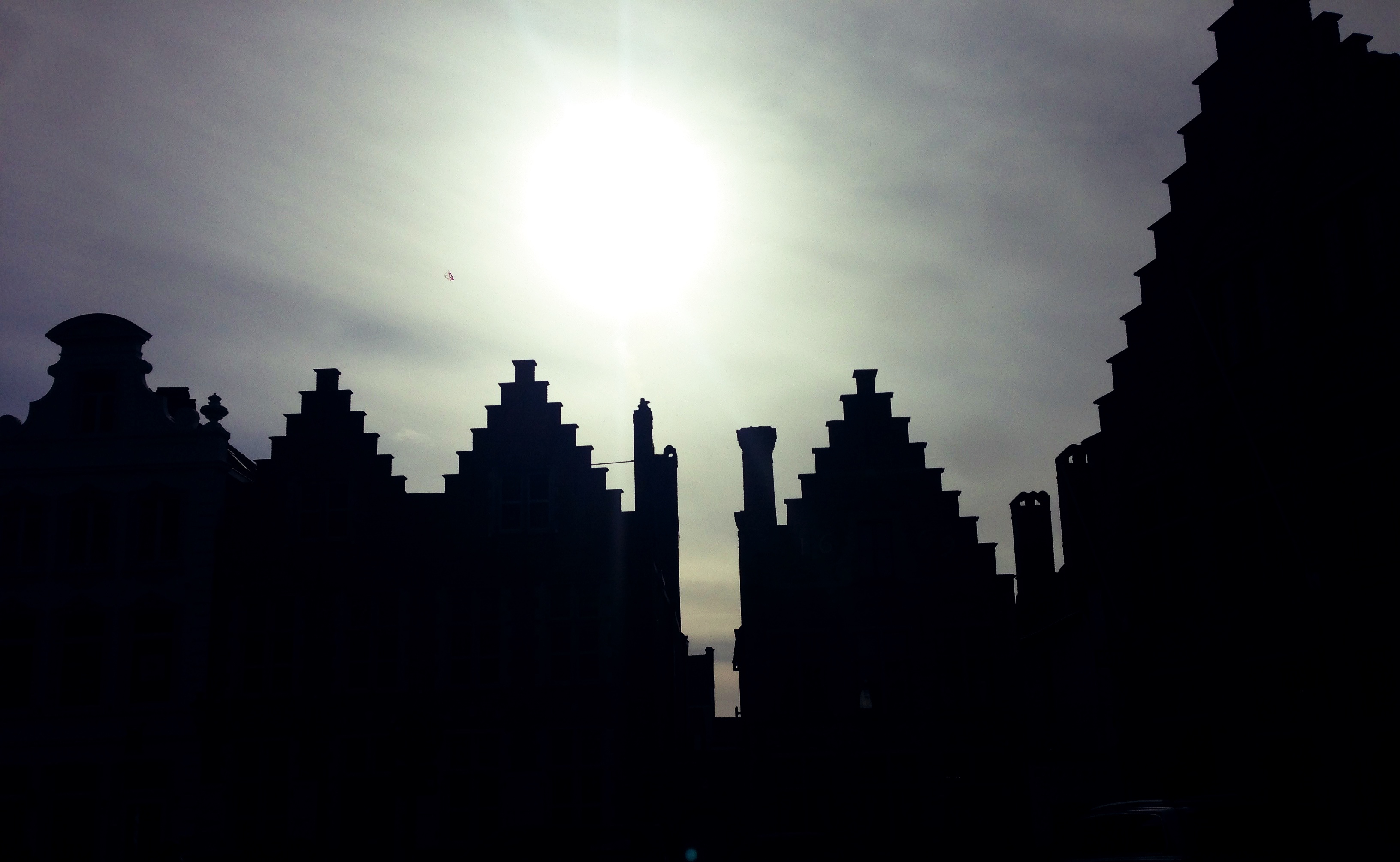
Why is Bruges so beautiful? The answer, as in so many cases, is money. Bruges spent the late middle ages as a commercial superpower, strategically situated near the English channel between Germany, France, and Spain. Merchants took advantage of a channel which led from the city’s harbor out into the ocean. Yet the good fortune was not destined to last. As with Seville’s equally lucrative river port, Bruges’s channel silted up and commerce, not usually loyal, moved elsewhere. This led to a long, slow, grinding decline, which was only broken centuries later when tourists realized that, as a result of this process, the city’s beautiful building had survived intact. Two World Wars also left the city unscathed, giving the contemporary traveler a time-capsule of a city.

The skyline of Bruges is dominated by three towers. The first I encountered was the city’s cathedral, St. Salvator’s. For such a stately purpose, it is a fairly homely building—at least when compared to such gothic monsters as the cathedral in Brussels. Built of brick and lightly decorated, its inside is restrained and calming. The next tower is that of the Belfry. This enormous protuberance stands proudly over market square, the central plaza, sprouting out of a lower building like an oak from a grassy field. In Bruges featured the tower in a starring role, such as when Colin Farrell tells a group of pudgy Americans that they shouldn’t try to climb to the top, and that he’s “not being funny.” As an out of shape American myself, I took Farrell’s advice and admired the Belfry from the ground.

The last and tallest tower belongs to the Church of Our Lady (Onze-Lieve-Vrouwekerk), a mostly gothic church which nevertheless, like the rest of the town, is mostly built of brick. But the church is more famous for what it contains that for its tower. First there are the gilded tombs of Charles the Bold and his daughter, Mary, the Duchess of Burgundy. Charles the Bold was cut down in battle and initially buried nearby; but his great-grandson, Emperor Charles V, had him and his daughter moved to Bruges. Strangely, however, modern researchers have been unable to find Charles’s body—though Mary’s corpse did make it to its intended location. In any case, the tombs are impressively lifelike and appropriately resplendent for noble bodies; and it was gratifying to find the forebears of the family which would one day come to dominate Spain: the Habsburgs.
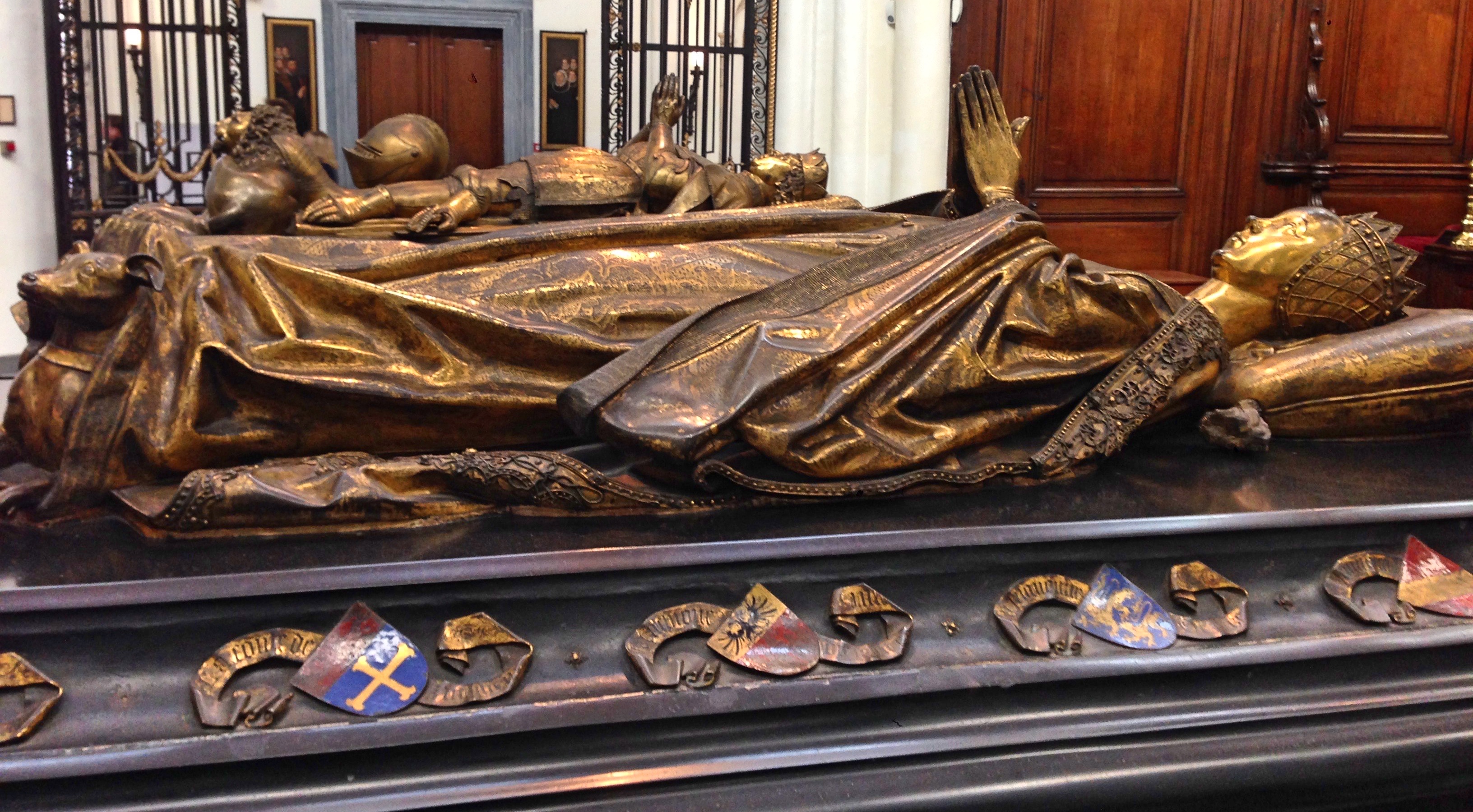
Yet most people do not pause at the tombs for very long, since in the next room, in the center of an altar, is a work by Michelangelo. Few works by the dour master can be seen outside of Italy, and fewer still in such a small city as Bruges. The subject is simple: The Madonna and Child, with Jesus resting tranquility on the Virgin’s knee, who is looking just as pretty and angelic as she does in the Pietà in St. Peters. If you are familiar with Michelangelo’s work, it is not difficult to spot the master’s touch here. Every element is just so finely executed—the poses, the fabric, the composition—that the statue immediately calls out to the viewer.
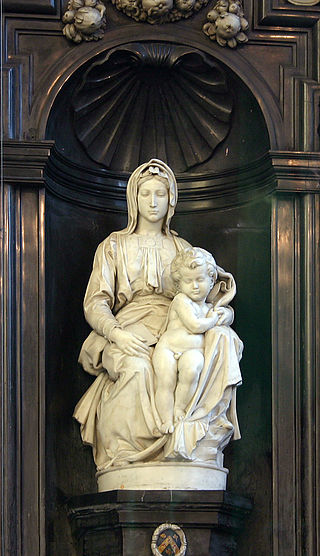
It seems strange that this should be so. I have seen hundreds of statues of this same subject, many by masters of their craft. How could Michelangelo take something that so many able men had been trying to do for so long, and do it better? This is the mystery of genius, I suppose. But could he have created such superlative art had not so many artists paved the way before him?
I should mention that this statue has been stolen and replaced twice: first during the Napoleonic invasions, and second during World War II. Luckily, violence and greed have so far left the statue intact, and have restored it to its rightful place.
It is difficult to write adequately about Bruges, I find, since you cannot give an accurate impression of the city by going through its parts, one by one, as a writer must do. So much of the experience of visiting consists in being lost in picturesque streets, surrounded by ever-changing views on all sides. Focusing on individual sights would detract from the impression of the whole. Nevertheless, there are some areas of the city that are worth singling out. One of these is Markt, or Market Square, the center of the city. This is where the famous Belfry can be seen. On one side of the square, the neo-gothic Provinciaal Hof (Provincial Court) rises in brooding majesty; while on the other, a row of pretty, brightly colored apartment buildings lightens the city’s aspect. In the center of the square is a statue of two Flemish heroes, Jan Breydel and Pieter de Coninck, who helped lead an (unsuccessful) uprising against the French in the 1300s.
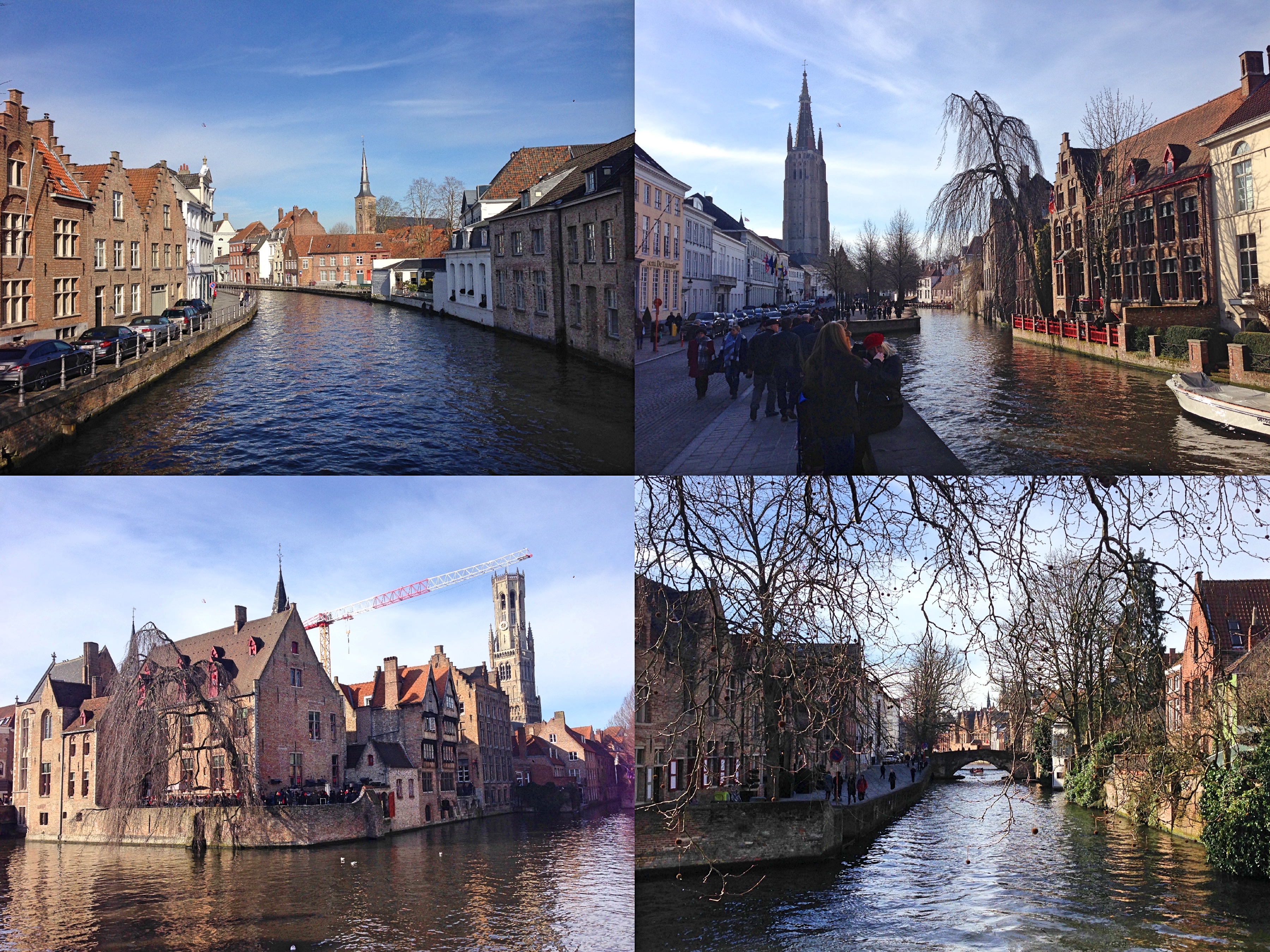
Another important plaza is the Burg Square, where Bruges’s City Hall is located. Compared with that of Brussels, this city hall is rather unprepossessing, though it is yet another excellent example of secular gothic architecture.
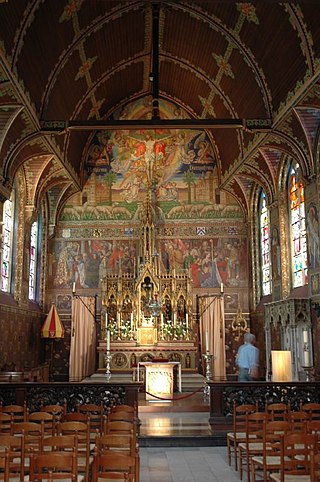
Near the city hall is Bruges’s most impressive church: the Basilica of the Holy Blood. Though ornately decorated, the church does not look like very much from the outside; indeed I hardly noticed it at first, since the rest of the city is just as attractive. But what I found up the staircase took me by surprise. This is the Chapel of the Holy Blood, dedicated to a vial of Jesus’s blood-stained cloth—supposedly picked up during the Crusades. If memory serves, there was a line of the faithful waiting to do reverence to this holy relic, and so to obtain divine favor. I didn’t join in. But I did admire the church. A vaulted, wooden ceiling focused all attention on the far wall, which is decorated with a colorful 20th century painting of the bloody scene. The walls on each side, and the ceiling above, are decorated in pleasing geometric patterns; and the stained glass, too, is of high quality, only adding to the swirl of color in the space. It is a rather cheerful place for worshiping blood.
I realize that I have come this far without mentioning the canals. The city is criss-crossed with watery channels, another legacy of its days as an active port; and this has earned the city, like Amsterdam, the nickname “Venice of the north.” As you can imagine, the constant presence of water only adds to the city’s considerable charm. The canals prevent Bruges from feeling constrained and claustrophobic, like so many medieval cities. One of the most photogenic spots in the city is the bridge crossing the Minnewater—a sort of pond that used to serve as a mooring-place for ships. From there I spotted a band of roving Spanish musicians, dressed in capes and strumming guitars. Were they street musicians, or just on vacation?

My last stop for the day—and what turned out to be my best experience in Bruges—was De Halve Maan brewery. (I thought that the name meant “half man,” but it means “half moon,” which I think is somewhat less cool.) This is a historic brewery, going back to the 1850s, right in the center of the city; and they give tours. I signed up for the next English group, waited a bit in the gift shop, and then embarked on a journey of discovery. Photos were not allowed, so I can’t give a detailed account of the tour; however, it was 45 minutes well spent. Our guide, a deadpan Flemish woman, took us from the modern brewing equipment on the ground floor, then up several steep and slender stairwells to rooms displaying antique brewing equipment. (Some of the staircases were so precipitous that my life flashed before my eyes; the tour is not well-suited to those with mobility issues.)
This was my first brewery tour, so I was eager to learn how this marvelous liquid is created. The process of making beer is at once extremely complex and beautifully simple, consisting of four natural ingredients (water, barley, hops, yeast) mixed, strained, heated, cooled, and aged in such a way that the end-result is a fizzy, bitter, refreshing and slightly intoxicating substance. I was certainly inspired to have a drink—and, luckily, the tour comes with a beer at the bar downstairs. As another added bonus, the view of Bruges from the top of the brewery is excellent, and photos are allowed. I left the brewery quite impressed with the company. They still make all their beer on site (though it is pumped through an underground tube several miles away for bottling).

What makes Belgian beer so special? Well, I am not exactly an expert in the subject. But even in my dilettantish tasting of Belgian beer, a definite flavor emerges: rich and sweet, almost like brown sugar. In contrast to many English and American ales, the bitter, floral flavor of hops is never very pronounced. Instead the beer is heavy and scrumptious, like a good dessert. Much of the brewing culture in Belgium dates back to medieval monasteries, a tradition which has led to the country’s beer culture being listed as UNESCO intangible world heritage. Without doubt Belgian beer is one of the treasures and pleasures of Europe.
So ended my day in Bruges. Now it was time to return to Brussels and then to Madrid. Thankfully I took the time to examine my Ryanair boarding pass that night, or else I would not have realized that (of course) Ryanair does not fly out of Brussels’s primary airport, but out of the South Charleroi airport—considerably more difficult to get to. But who could complain about early flights and inconvenient airports when Belgium is the reward?
